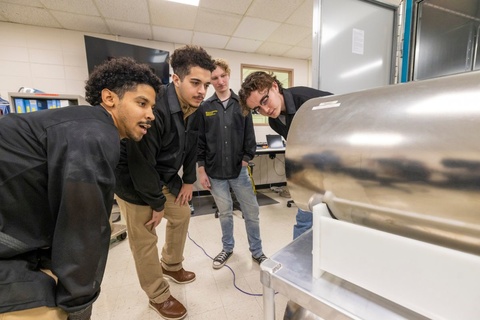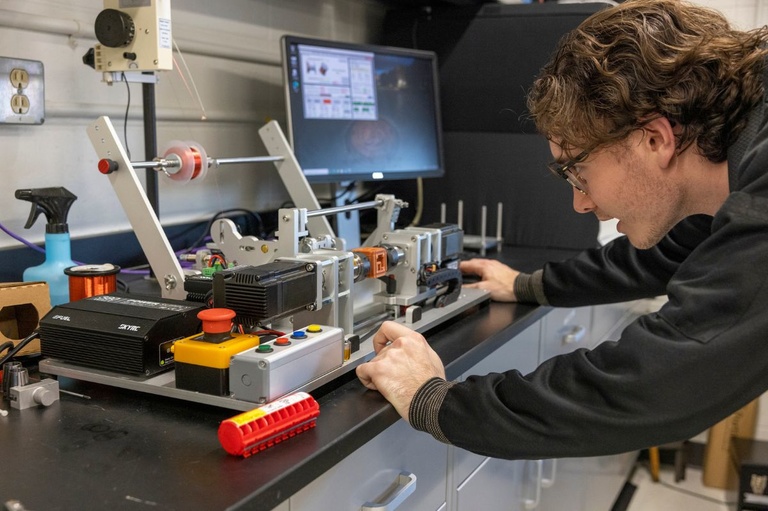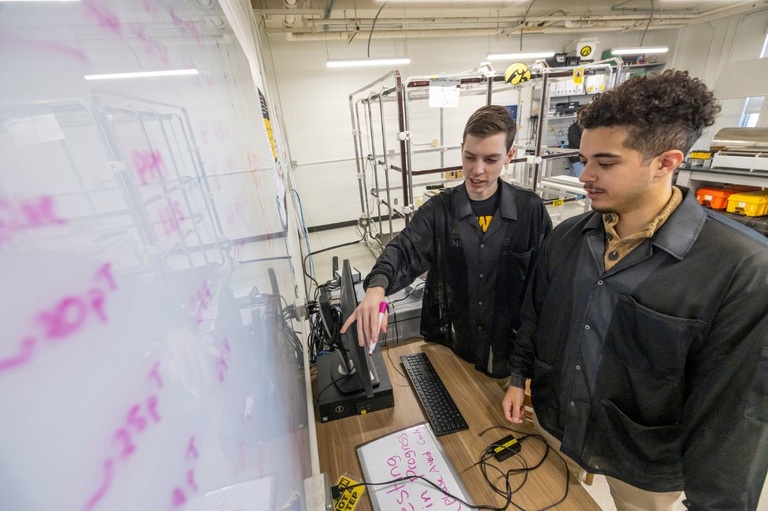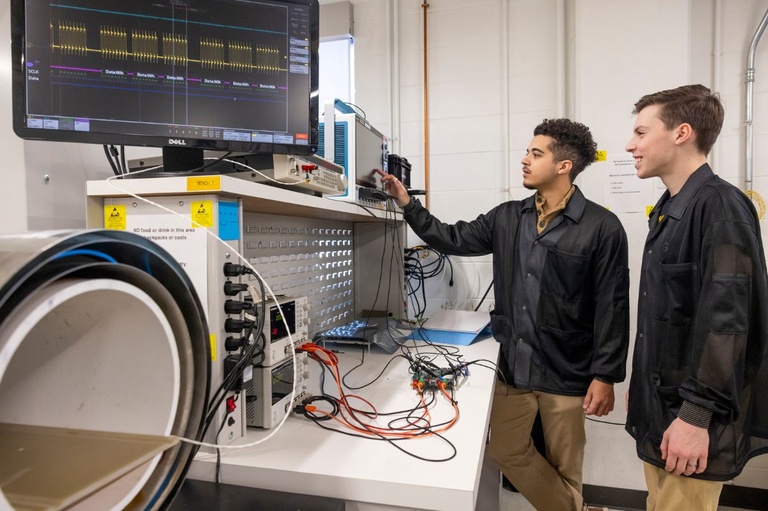By Emily Delgado
A team of College of Liberal Arts and Sciences researchers has been working on building one out of five instruments that will help measure charged particles — electrons and ions — as part of the NASA-funded TRACERS mission.
In 2019, NASA approved funding for TRACERS — Tandem Reconnection and Cusp Electrodynamics Reconnaissance Satellites — the largest research award in University of Iowa history. TRACERS is a satellite mission aiming to study the mysterious, powerful interactions between magnetic fields of the sun and Earth.

David Miles, associate professor in the Department of Physics and Astronomy, was named principal investigator of the project in September 2023 after professor Craig Kletzing died.
The TRACERS mission consists of two identical satellites that will orbit Earth in tandem. This research will help answer questions about space weather, particularly how the sun transfers energy, mass, and momentum to near-Earth space.
The two satellites moving in tandem are crucial because much of the science done in this area of space physics has relied on measurements taken by one spacecraft at a time.
The TRACERS instruments were chosen to help understand the local plasma environment. The instruments measuring electrons and magnetic fields are being built at Iowa, and the other instruments are being built by partnering institutions.
“I like to think of the instruments as being like the ‘ears’ and ‘noses’ of the spacecraft. The ‘noses’ are directly sniffing the charged particles in space, while the ‘ears’ are listening to the various parts of the electromagnetic spectrum,” said Jasper Halekas, professor in the Department of Physics and Astronomy.
Halekas is overseeing the building of Analyzer for Cusp Electrons instrument, also known as ACE, which will measure electrons.

“ACE measures the number of electrons around the spacecraft, their energies, and the direction they are traveling every 50 milliseconds,” Halekas said. “This allows us to map out the different regions of the near-Earth space environment with very high spatial resolution, better than 1 kilometer, as TRACERS orbits the Earth.”
Since the impact James Van Allen has had on Iowa’s physics and astronomy department, the university has built a long and extensive history in space science, making it the perfect place for TRACERS.
“Being selected to build TRACERS demonstrates that we are still an important player and just as relevant in space science today as we were then,” Halekas said.
The launch date for TRACERS is scheduled for April 13, 2025, and every scientist, including Halekas, is excited to see the results of the mission.
“It is an honor to get to work on an exciting project like this and to represent our university to NASA and the scientific community,” Halekas said.
Photos taken by Jill Tobin




